Thursday, 16th August 2018
We planned to visit Bran Castle, but rather than take a guided tour – you should be aware of Robert’s opinion of those by now – we decided to take a local bus from Bus Station 2. Buses leave every hour, on the hour in both directions and we caught one at 10:00. The fare is just 8 lei [£1.60] per person each way.

The bus itself was old, the windows were hazy with age and some were damp between the double glazing so the views were very limited. There were also road works on the route which caused some delays in this direction. The journey usually takes 40 mins, but today it was an hour and 10 minutes.
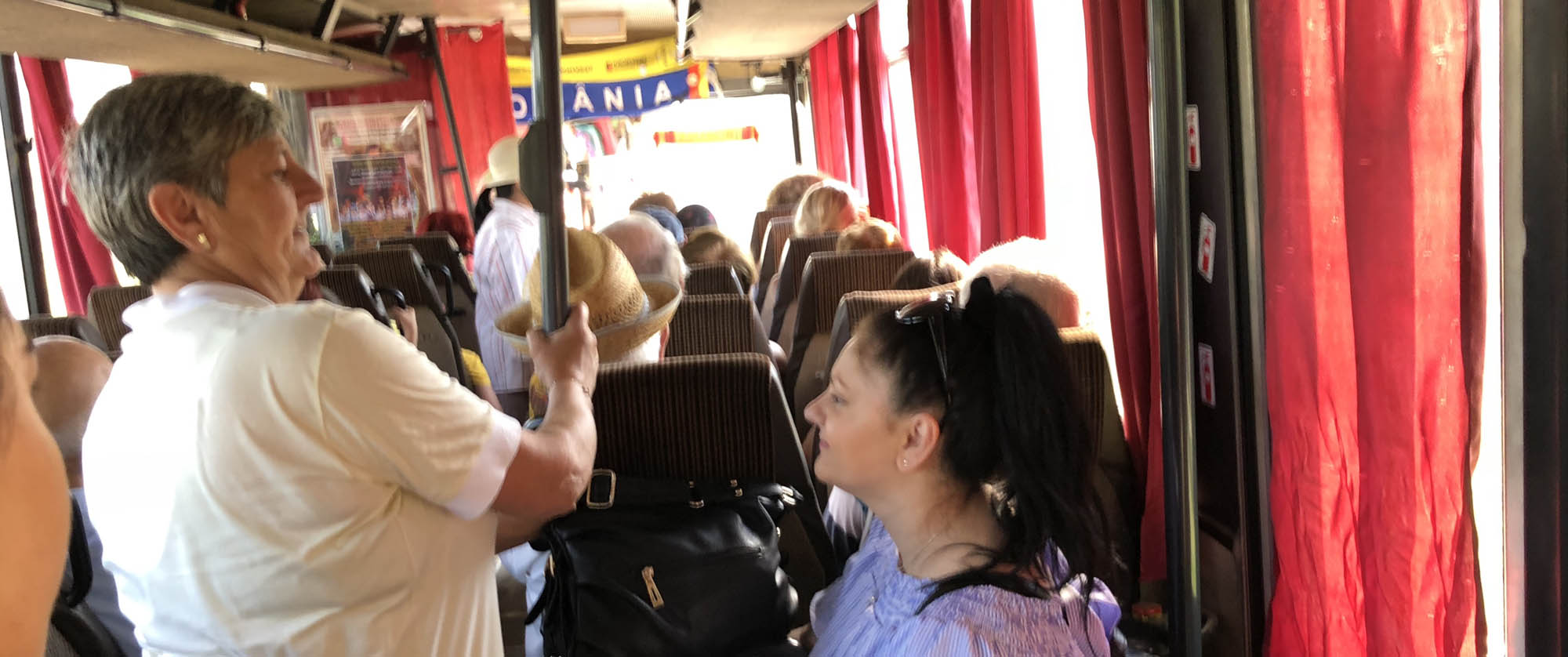
We were of course aware that Bran Castle is marketed as being associated with Dracula and Vlad the Impaler although Vlad was only in charge of the castle for two months. We were also aware that we were visiting one of the most popular tourist sites in Romania on a public holiday. We still weren’t quite prepared however for the crowds and the sheer commercialisation of the place. Arriving in Bran you first have to queue to buy tickets to enter the castle and grounds.

The queue snakes its way backwards past the haunted house and through stalls selling black vampire-related T shirts; locally made carved wooden artefacts; traditional embroidered clothes; postcards at three times the price of those available inside the castle and unsuitable children’s toys which would never be allowed on an airplane. Having queued for 45 minutes and paid the 40 lei [£8] entrance fee, we felt we had achieved our goal.
However it soon became apparent that we would need to queue again for 25 minutes to get into the castle itself, where the queues continue throughout the rooms. Bran Castle was built on a cliff at 2,500 feet by the Saxons of Braşov and completed in 1382 to defend Transylvania’s border.
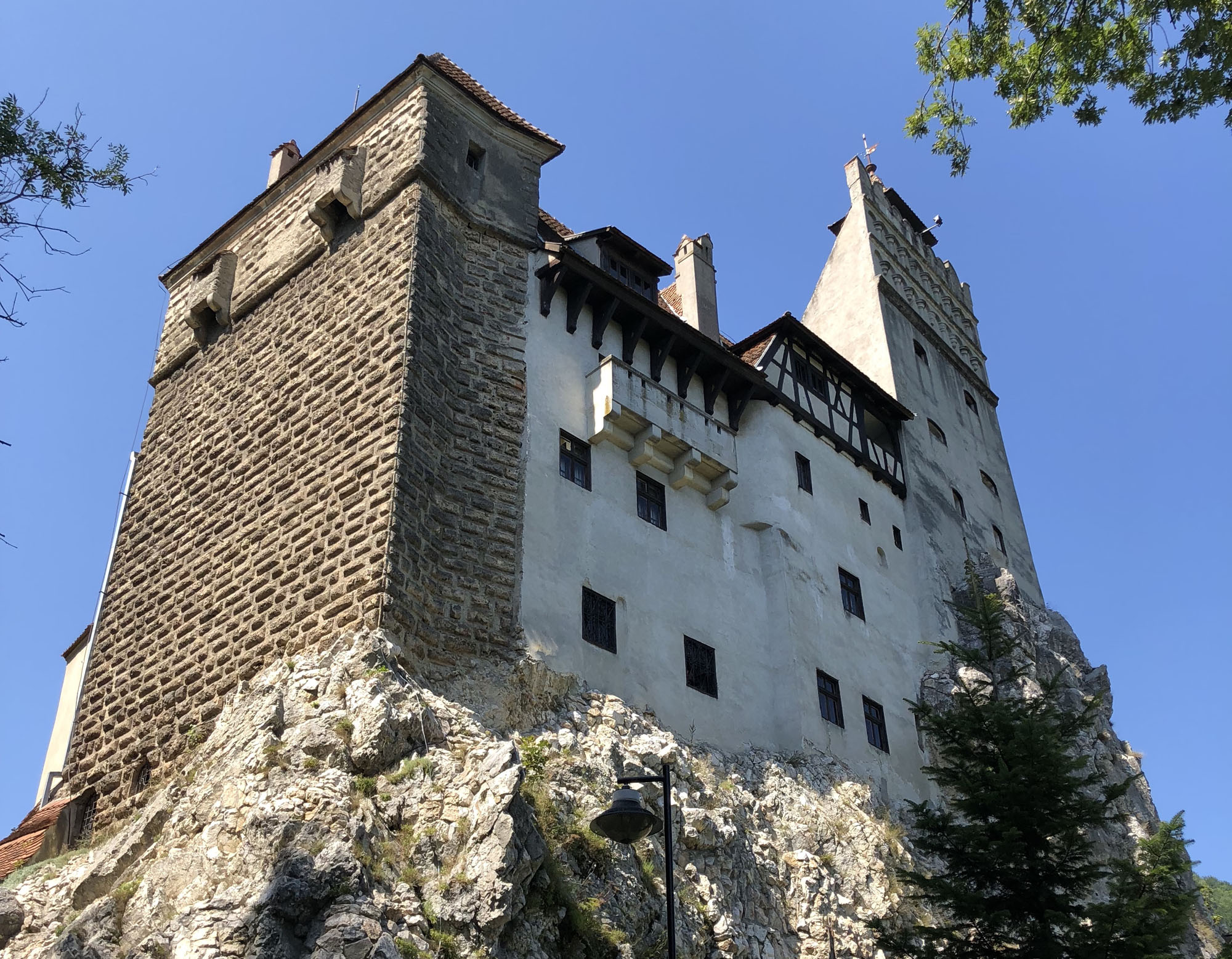
Although subsequently it was given to Queen Marie of Romania in 1920, making it a royal palace, it retains the small low-ceilinged rooms; narrow winding stairs, central courtyard and balconies of the past and it is easy to see how this castle would have been used to defend the border.
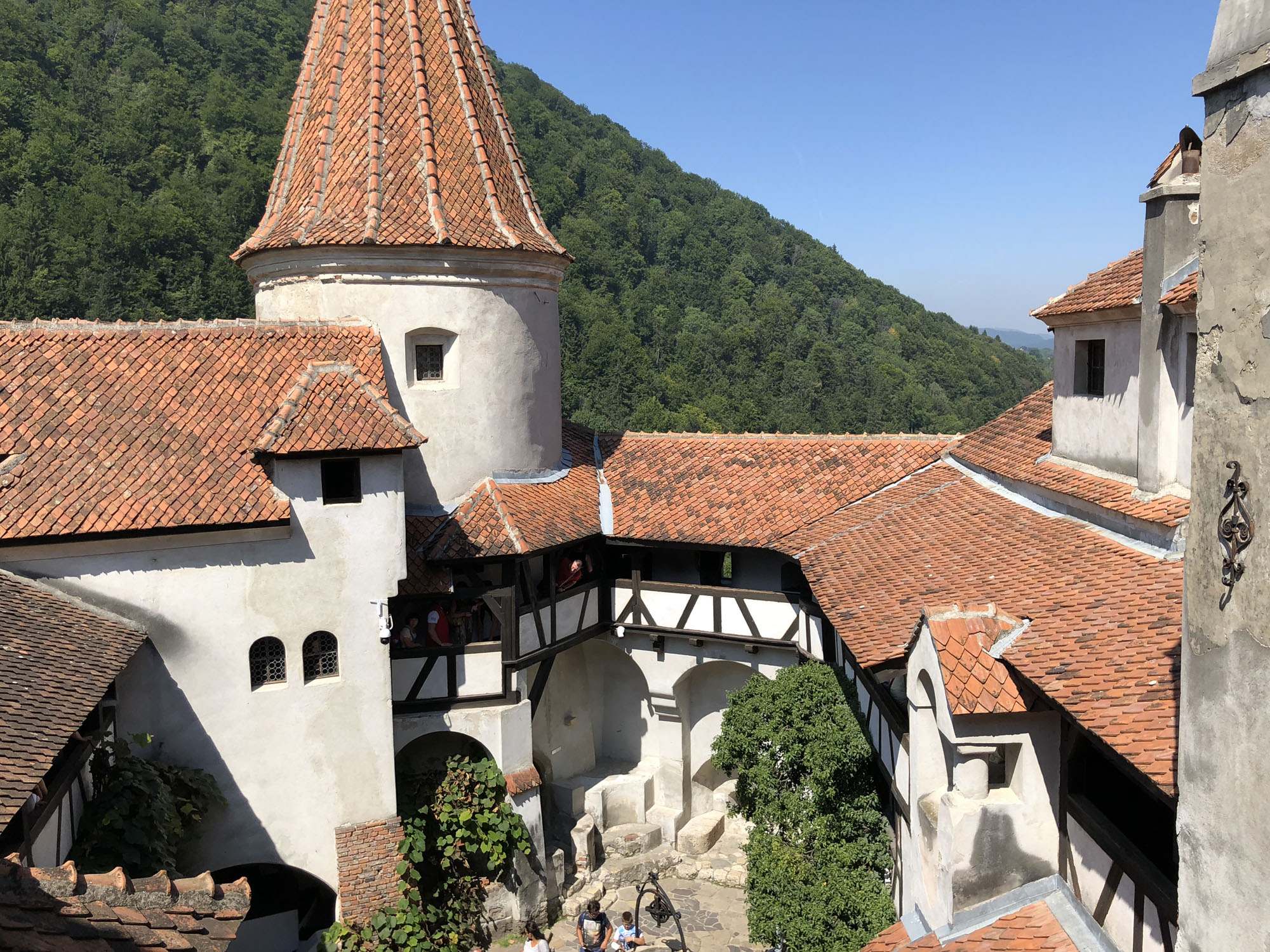
The crowds make it difficult to get a clear view to read all the displays, unfortunately and in some sections staff exhort visitors not to stop.
It does boast some modern conveniences however. The rooms feature tiled stoves for warmth and in 1937 an electric elevator was installed in the old fountain and a tunnel carved out of the rock at the bottom to make it easier for Queen Marie to visit the park.

After our visit we had planned to stop for a cold drink but as we walked past, the bus to take us back to Brasov was waiting at the stop and it seemed too opportune not to get on board. This was a newer bus and although still without air conditioning, it did have clear windows so we were able to enjoy the view. Passing Râşnov Citadel, which we had not glimpsed on the outward journey, we noted this as a place to visit next time we are in the region.
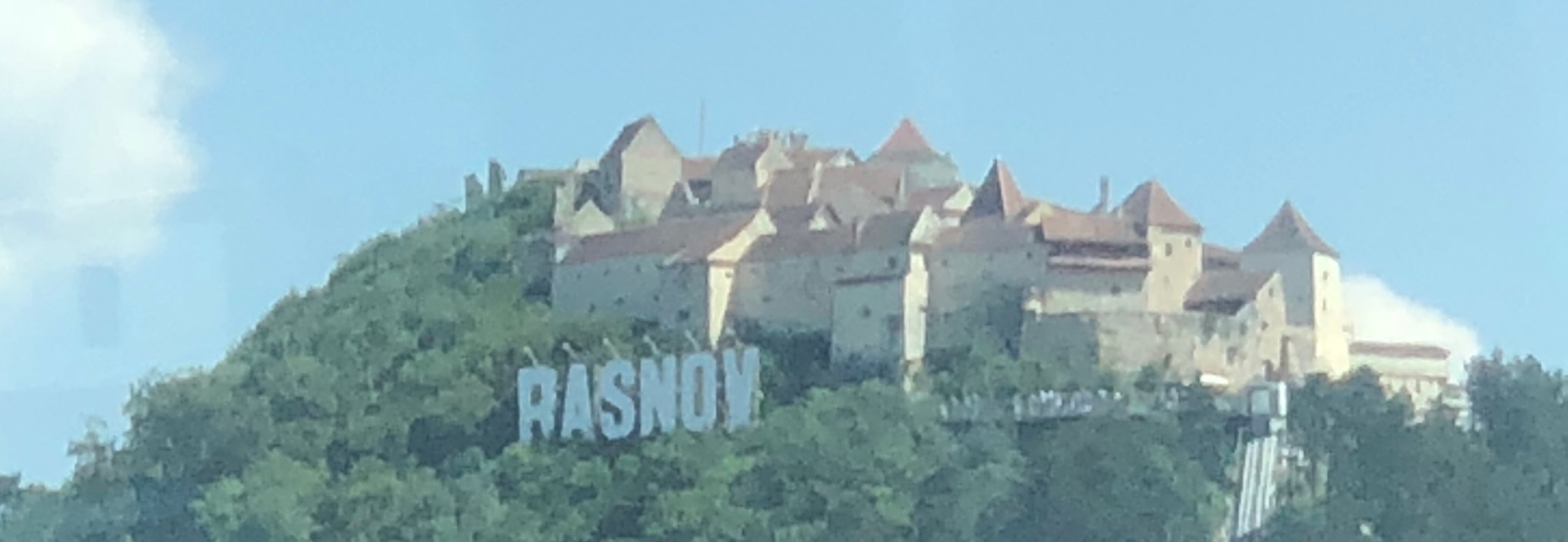
The driver on this journey was more intent on keeping to the timetable and to mitigate against the delays caused by the roadworks overtook the cars waiting at the traffic lights several times.
From the bus station we took a taxi to the centre. The taxi driver was quite chatty and declared Bran Castle to be “a joke” and recommended Sinaia Palace as being a real royal residence. Another place to visit on our return. He asked us if we were Australians (because of our accents!!) but when we informed him that we were English (without any accents, apart from Robert’s occasional brummie references to buzzes) he wanted to have a good old chat about Brexit – telling us it will never actually happen.
Back in Braşov we indulged in a cold beer in Sfatului Square, with Casa Sfatului [The House of the Council] in the centre before setting off to look at some of the city’s many sights.
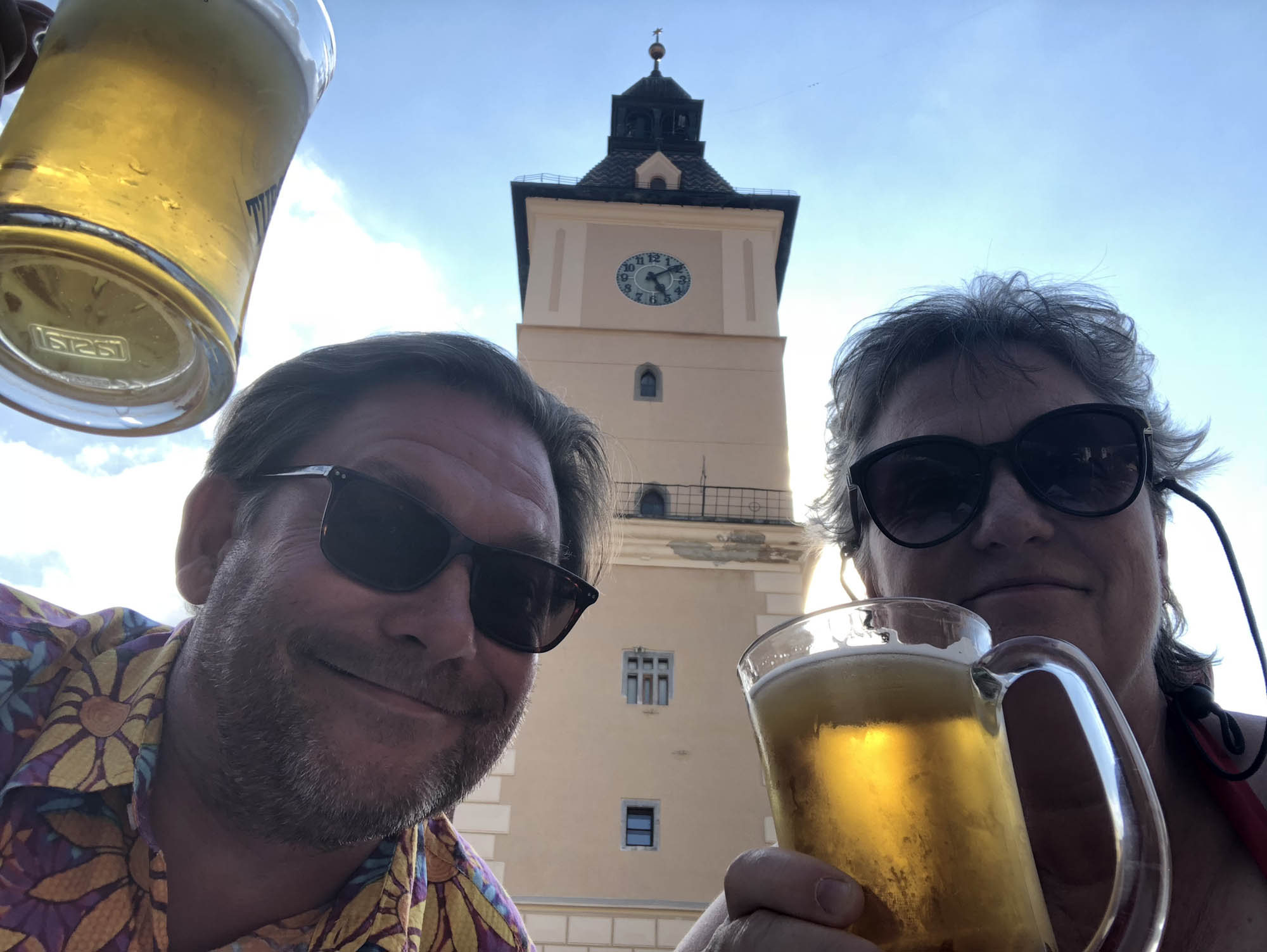
The first of these was the Biserica Neagra which does not permit any photography. It is not in fact black but is called this because of the Great Fire in 1689, set by the invading Habsburg forces during the Great Turkish war which partially destroyed the church and turned the walls black.
Photo of outside of the church
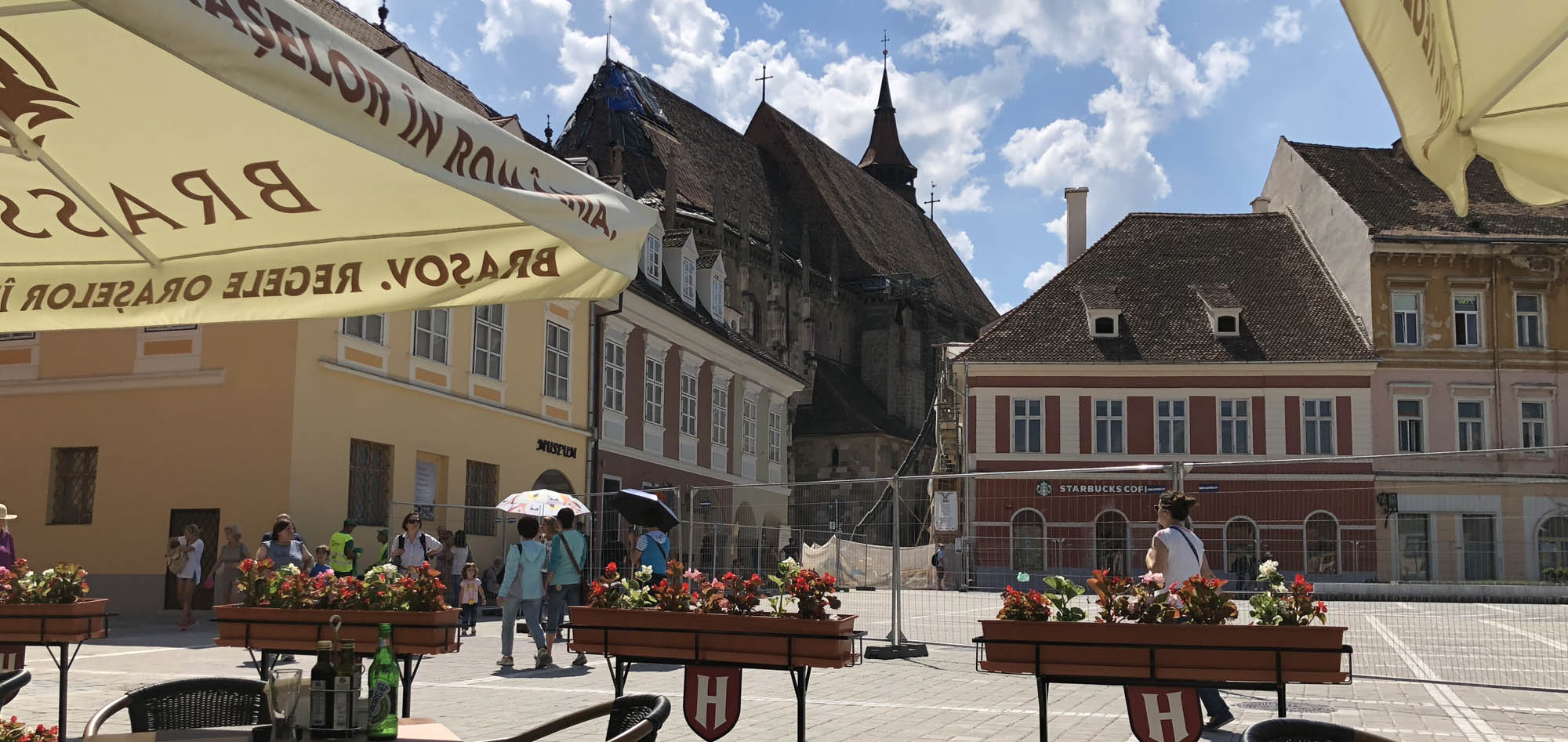
Poarte Ecaterinei [Catherine’s Gate] was built by the Tailor’s Guild in 1559, replacing the old gate which had been destroyed by the flood in 1526 and forms part of the old defences of the town. This is the only medieval city gate to have survived and, with its pointed turrets, looks like the entrance to a Disney castle. The four corner turrets have a more sinister meaning however as they symbolise the authority of the town, including the authority to impose the death penalty. Notice also the Hollywood style Brasov name up on the hill. If we had had more time here we would have taken the cable car up this hill to see the views.
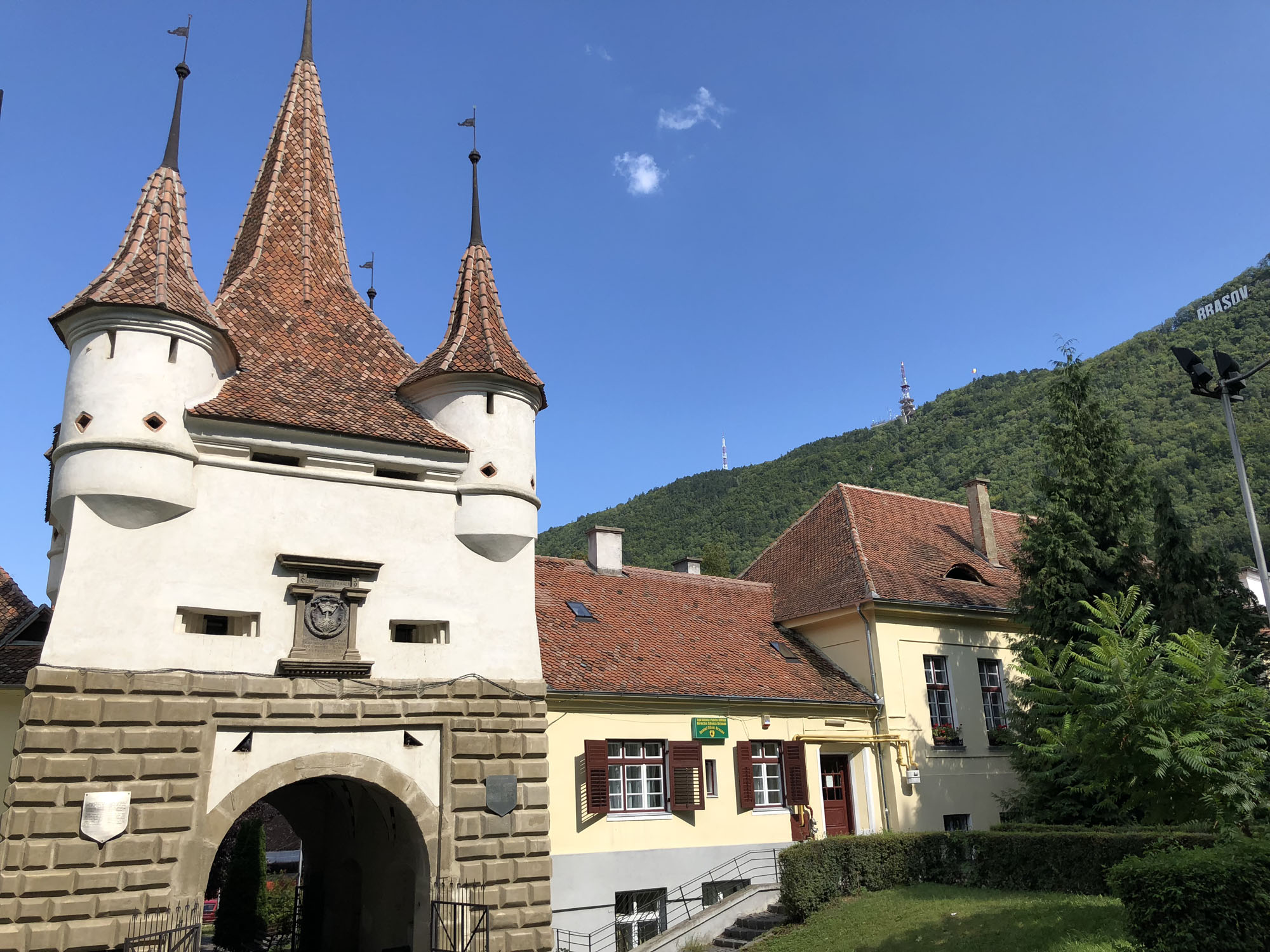
Our taxi driver had also been very scornful of the tourist train when we had passed it earlier on. But you know how Robert loves a train…
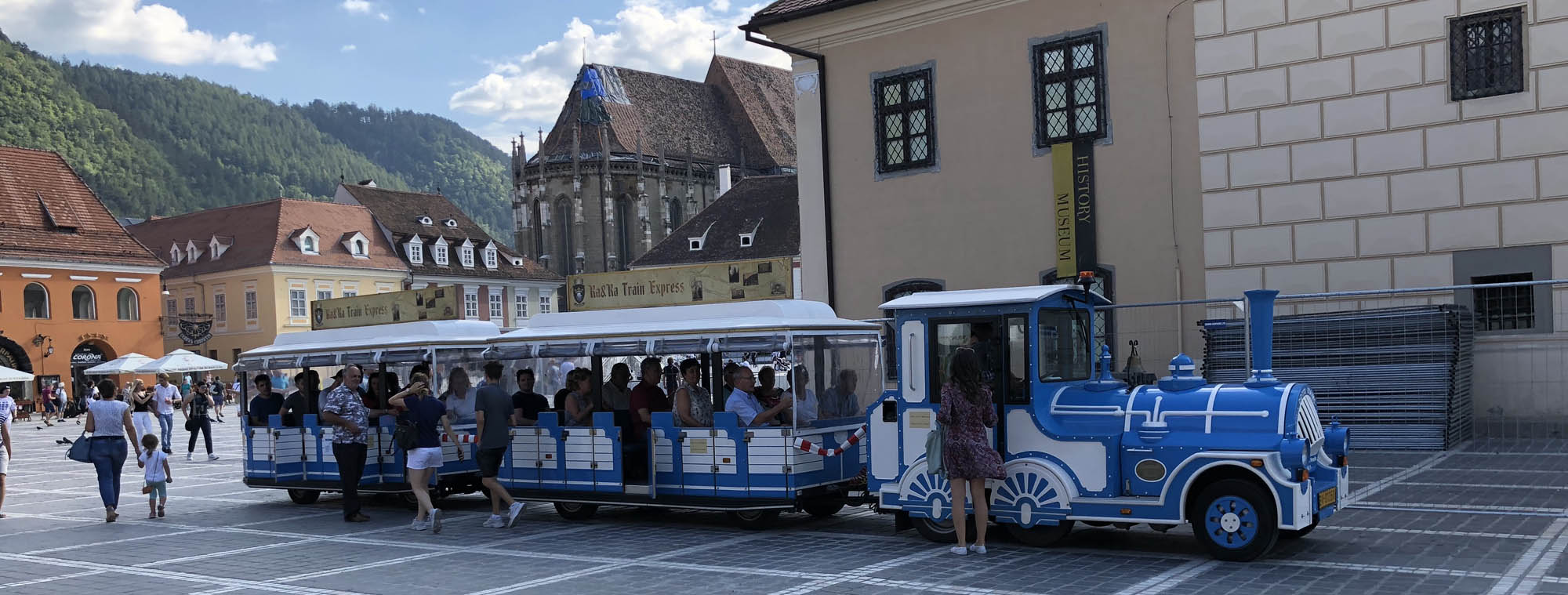
Lesson for the day: Don’t go to a country’s main tourist attraction on a public holiday
Miles walked today: 7.7
Route Map:
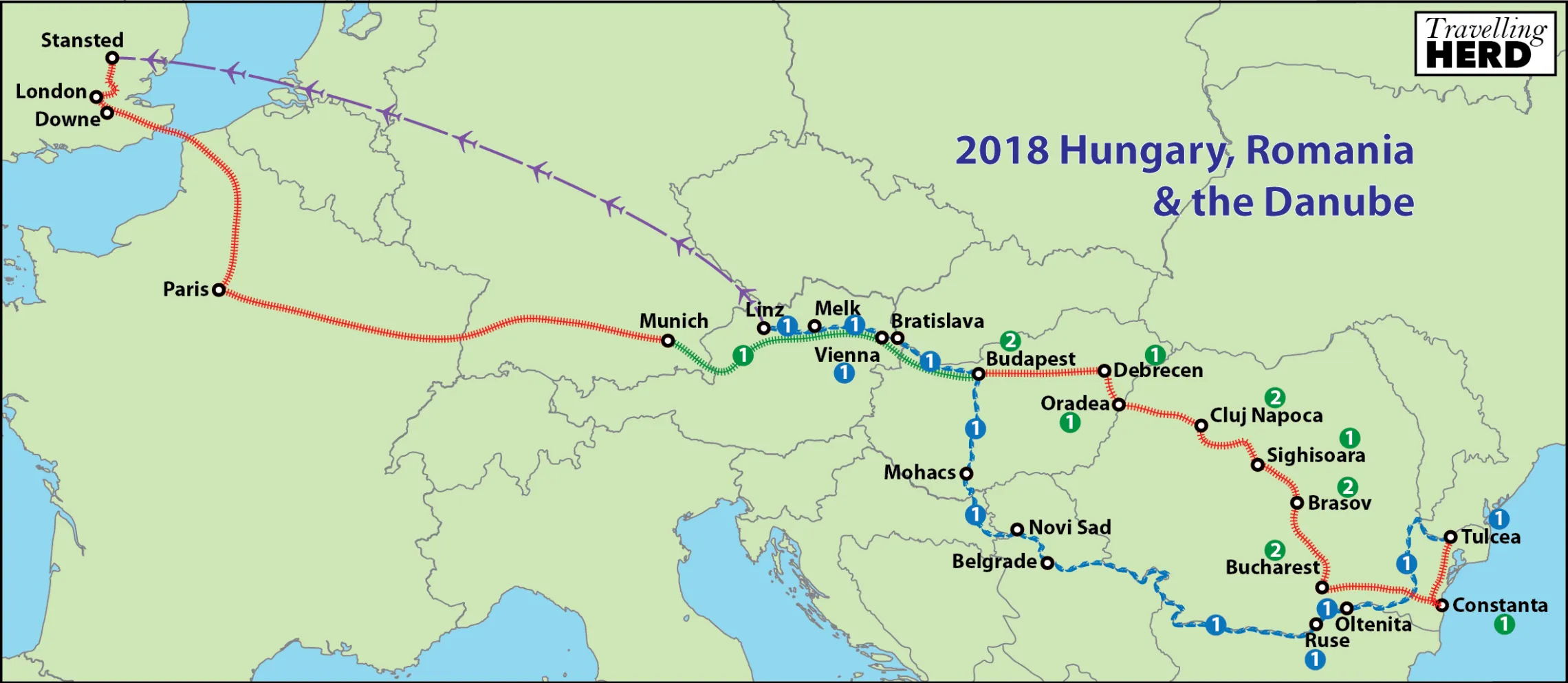



![Sighisoara, Dracula’s birthplace [allegedly]](https://i0.wp.com/iciel.uk/imagesTH/18-05-Danube/Post8/18-05-08-feature.jpeg?resize=510%2C510)

